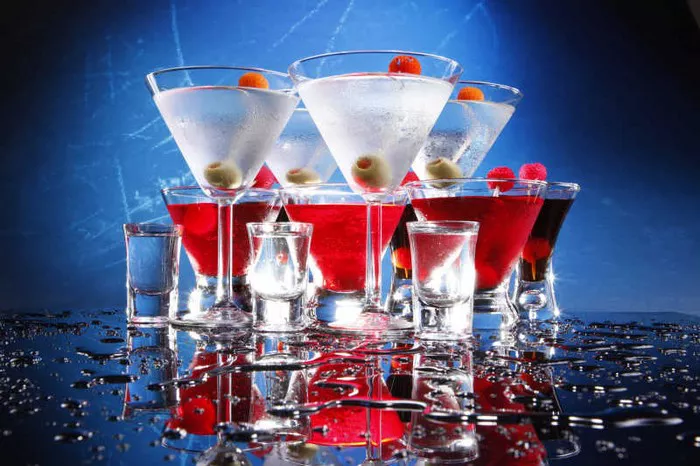The question of “how many cocktails does it take to get tipsy” is a common inquiry among social drinkers seeking to understand their alcohol tolerance levels. However, providing a definitive answer to this query isn’t straightforward, as numerous factors contribute to how quickly one feels the effects of alcohol. From the type of cocktails consumed to an individual’s biological makeup, understanding these elements can shed light on the complexities of alcohol intoxication.
Alcohol Content Disparities Among Cocktails
When exploring the query “how many cocktails does it take to get tipsy,” it’s crucial to acknowledge the variation in alcohol content among different drink recipes. Cocktails vary significantly in their alcohol concentration due to the diverse combinations of spirits, mixers, and garnishes used in their preparation.
For instance, a classic Martini, comprising gin and vermouth, will have a higher alcohol content compared to a fruity Mojito or a diluted Spritzer. A basic guideline is to consider the standard serving of alcohol in a cocktail, which is around 1.5 ounces of spirits per drink. However, cocktails with multiple types of alcohol or liqueurs might contain more alcohol than anticipated.
The number of cocktails required to induce a tipsy feeling thus varies depending on the type and strength of each drink. While a person might feel slightly intoxicated after two Martinis, they might need more servings of a lighter beverage like a Margarita to reach a similar level of inebriation.
Body Weight and Metabolism
One of the pivotal factors influencing the answer to “how many cocktails does it take to get tipsy” is an individual’s body weight and metabolism. A person’s weight influences how alcohol is distributed in their body. Generally, those with a lower body weight tend to feel the effects of alcohol more rapidly than individuals with higher body mass.
Metabolism also plays a crucial role. Enzymes in the body break down alcohol, and the rate at which this occurs differs from person to person. Factors like age, gender, and overall health contribute to the speed at which alcohol is metabolized. Therefore, someone with a faster metabolism might process alcohol more efficiently, necessitating more cocktails to feel tipsy compared to someone with a slower metabolism.
Tolerance and Experience
Alcohol tolerance, built over time, significantly affects how many cocktails it takes to feel tipsy. Regular drinkers often develop a higher tolerance level, requiring more alcohol to experience the same effects they once felt after fewer drinks. Conversely, occasional or infrequent drinkers might feel the effects of alcohol more intensely, even after consuming a smaller quantity.
Experience with alcohol consumption also influences an individual’s ability to handle its effects. Seasoned drinkers might have a better grasp of their limits and recognize the signs of intoxication, enabling them to moderate their intake accordingly. Novices, on the other hand, might misjudge their tolerance levels and inadvertently consume more cocktails than their body can handle, resulting in quicker intoxication.
Rate of Consumption and Mixing Beverages
The pace at which cocktails are consumed directly impacts how quickly one feels tipsy. Rapid consumption, such as consuming multiple cocktails within a short period, can elevate blood alcohol concentration swiftly, leading to a more pronounced and rapid feeling of intoxication.
Moreover, mixing different types of alcoholic beverages can influence intoxication levels. Alternating between cocktails with varying alcohol contents or combining different types of alcohol can confuse the body’s metabolism, potentially leading to faster intoxication than sticking to a single drink type.
Food Intake and Hydration
Another factor influencing alcohol’s impact on the body is food intake and hydration. Consuming food before or while drinking slows down the absorption of alcohol into the bloodstream, potentially delaying the onset of intoxication. A well-rounded meal with proteins and healthy fats can help in this regard.
Similarly, staying hydrated by drinking water between cocktails can mitigate the effects of alcohol. Hydration helps maintain a balanced electrolyte level, preventing dehydration—a common side effect of alcohol consumption that exacerbates its effects.
Environmental Factors and Emotional State
Environmental factors and emotional state can also affect how quickly one feels the effects of alcohol. Social settings, peer pressure, stress, or emotional distress can alter a person’s perception of their alcohol tolerance, leading to increased consumption and faster intoxication.
For example, feeling anxious or upset in a crowded or noisy environment might heighten the effects of alcohol, making someone feel tipsy more quickly than they would in a relaxed setting. Similarly, feeling pressured to keep up with others’ drinking pace can lead to overconsumption and faster intoxication.
Alcohol’s Impact on the Body
Understanding the physiological impact of alcohol consumption aids in comprehending the answer to “how many cocktails does it take to get tipsy.” Once alcohol is ingested, it enters the bloodstream and affects the central nervous system. The speed and intensity of this impact vary based on the factors mentioned earlier.
Alcohol’s effects typically progress in stages, starting with a feeling of relaxation and euphoria. As consumption increases, it can lead to impaired judgment, reduced coordination, slurred speech, and altered perception. Consuming excessive alcohol can result in severe intoxication, leading to loss of consciousness, alcohol poisoning, and potentially life-threatening complications.
Responsibility and Moderation
In conclusion, the question of “how many cocktails does it take to get tipsy” lacks a one-size-fits-all answer. Numerous interrelated factors contribute to how quickly an individual feels the effects of alcohol. Recognizing personal limits, practicing moderation, and understanding the variables at play are crucial for responsible drinking.
It’s essential to prioritize personal well-being and safety while consuming alcoholic beverages. Knowing one’s tolerance level, understanding the alcohol content in different cocktails, and being mindful of consumption rates can help individuals make informed decisions regarding alcohol intake.
Ultimately, enjoying cocktails responsibly involves being aware of individual limits, respecting personal boundaries, and prioritizing safety above all else. By understanding the complexities of alcohol intoxication and making informed choices, individuals can savor cocktails while minimizing risks associated with excessive drinking.


